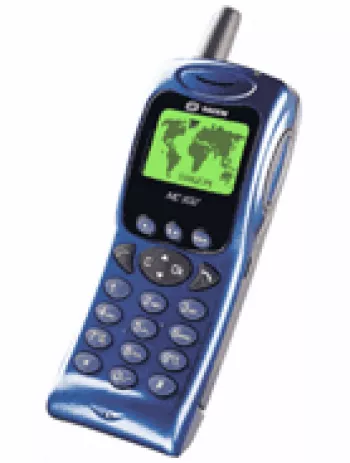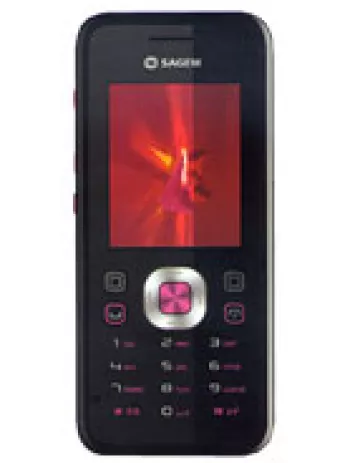
Introduction
The Sagem MC 850 is a notable device from the late 1990s, marking a period of significant evolution in mobile phone technology. Released in 1998, it embodied the transition phase from simple communication tools to more sophisticated feature phones. This article delves into the comprehensive details of the Sagem MC 850, exploring its specifications, design, features, and its place in the historical context of mobile technology development.
Design and Build
The Sagem MC 850 featured a robust and straightforward design, typical of its era, where functionality often took precedence over sleekness. It measured 132 x 50 x 21 mm and weighed 137 grams, making it a relatively bulky device by today's slim standards. These dimensions were quite common then, as mobile technology was still in its nascent stage concerning miniaturization and aesthetics.
The body of the device was built to withstand the rough handling and wear common for electronic devices at the time, making it durable for everyday usage. The MC 850 used a Mini-SIM card, a standard size during that period, allowing for ease of connectivity.
Display
The display of the Sagem MC 850 was monochrome and could display graphics. Specifically, it showed up to 3 x 12 characters, which was sufficient for basic tasks such as viewing contact names, phone numbers, and short messages. The simplicity of the monochrome graphic display was in line with technological capabilities of its time.
Network and Communication
Designed primarily as a communication device, the Sagem MC 850 supported GSM technology operating on 900 and 1800 MHz bands, which were the standard frequencies for mobile networks globally. Although the device lacked GPRS and EDGE support, limiting its data capabilities, it provided reliable voice communication in most geographical locations of its time.
Battery Life
The Sagem MC 850 housed a removable Li-Ion battery with a capacity of 600 mAh. This battery gave the phone a respectable standby time of up to 140 hours and a talk time of around 5 hours. The prominence of removable batteries during this era allowed users to replace them easily, ensuring prolonged device usability despite battery wear over time.
Sound and Alerts
In terms of sound, the MC 850 included a loudspeaker for basic alert tones and ringtones. It supported monophonic ringtones and vibration alerts, standard features for alert notifications at the time. However, it did not feature a 3.5mm audio jack or advanced audio capabilities, reflecting the device's primary focus as a communication tool rather than a multimedia device.
Memory
The memory capabilities of the Sagem MC 850 were quite limited by modern standards. It did not offer a card slot for memory expansion, which was not unusual for devices in the 1990s. The phonebook capacity was limited to 100 entries, emphasizing its role as a simple communication device rather than a data storage unit.
Additional Features
Additional features of the Sagem MC 850 were minimalist yet functional. The device supported SMS messaging, allowing users to send and receive text messages, a feature that was becoming increasingly popular at the time. Basic utilities like a clock and an alarm were integrated, which were essential for daily personal management. The absence of advanced features such as games, internet browsing, or Java support highlights its focused role in voice communication.
Connectivity and Comms
Connectivity options on the Sagem MC 850 were extremely limited. It did not offer Bluetooth, Wi-Fi, or USB connectivity, features that would become ubiquitous in later years. This limitation reinforced the device's design focus as a communication tool with no capability for data transfer or internet browsing. The lack of positioning technology and radio were also indicative of the time when these features were not standard in mobile devices.
Market Impact and Legacy
At the time of its release, the Sagem MC 850 represented a common design philosophy in mobile technology—simplicity and functionality over feature-rich complexity. While it may seem basic by contemporary standards, its impact and legacy lie in its contribution to the widespread adoption of mobile phones during the late 1990s. It helped set the stage for more advanced designs and capabilities, leading to the rich feature phones, and eventually smartphones, in the decades to come.
Discontinuation and Aftermath
As with many devices in the rapidly evolving tech world, the Sagem MC 850 was eventually discontinued. The advancements in mobile technology soon rendered earlier models obsolete, pushing manufacturers to innovate continually. However, for many users, devices like the MC 850 hold a place of nostalgia, representing a simpler time in mobile communication history.
Conclusion
The Sagem MC 850, despite its humble specifications, played a significant role in the evolution of mobile phones. It exemplified the state of technology in the late 1990s and paved the way for future innovations. Understanding its place in history provides insight into how far mobile technology has evolved and the foundational role such devices played in shaping the communication landscapes we enjoy today.
Key Features of Sagem MC 850
- GSM Technology Support (900/1800 bands)
- Compact Dimensions: 132 x 50 x 21 mm
- Lightweight Design: 137 g
- Monochrome Graphic Display
- Capacity for 100 Contacts in Phonebook
- Includes Loudspeaker and Vibration Alerts
- Supports SMS Messaging
- Equipped with Clock and Alarm Functions
- Removable Li-Ion Battery with 140 hours Stand-by and 5 hours Talk Time
Disadvantages of Sagem MC 850
- Limited to GSM technology with no support for GPRS or EDGE.
- Discontinued model; support and parts might be unavailable.
- Monochrome display with limited resolution (3 x 12 characters).
- No external memory card slot for storage expansion.
- No built-in camera.
- Lacks modern connectivity options like WLAN, Bluetooth, and USB.
- No radio or positioning features.
- Only supports SMS messaging; lacks sophisticated messaging capabilities.
- No available games or support for Java applications.
- No 3.5mm headphone jack for audio output.
View Also
More Phones
All Rights Reserved +13916 Phones © Mobilawy 2025
























